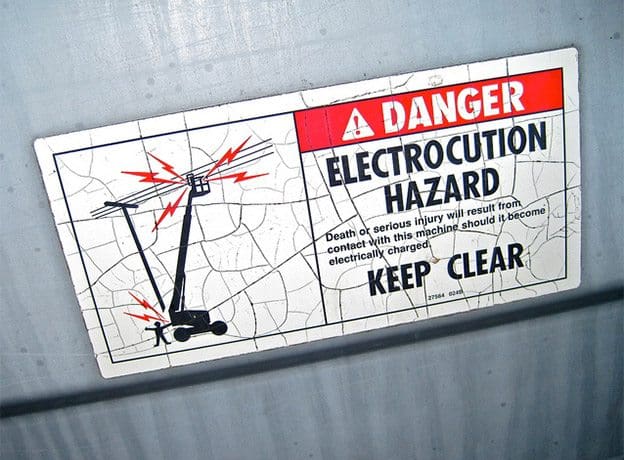
Introduction
Electric current passing through the body, particularly alternating current at power frequencies of 50 Hz and 60 Hz, may disrupt the nervous system, causing muscular reaction and the painful sensation of electric shock. The most common reaction is to be thrown off the conductor as a result of the muscular contraction.However, in a small number of instances, the consequence is death from cardiac arrest, or from ventricular fibrillation (where the heart muscle beats in a spasmodic and irregular fashion) or from respiratory arrest.
The psychological effects
are largely determined by the magnitude and frequency of the current,
the waveform (for example, continuous sine wave, or half wave rectified
sine wave, or pulsed waveform), its duration, and the path it takes
through the body.
An authoritative guide on the topic is published in IEC 60479. The following text concentrates on the most common situation of a shock from a continuous power frequency ac waveform.The magnitude of the current is the applied voltage divided by the impedance of the body. The overall circuit impedance will comprise the body of the casualty and the other components in the shock circuit, including that of the power source and the interconnecting cables. For this reason, the voltage applied to the body, which is commonly known as the touch voltage, will often be lower than the source voltage.
The impedance of the body is determined by the magnitude of the touch voltage (there being an inverse relationship between impedance and voltage) and other factors, such as the wetness of the skin, the cross-sectional area of contact with the conductors, and whether or not the skin is broken or penetrated by the conductors.

The path that the current takes through the body has a significant effect on the impedance. For example, the impedance for a hand-to-chest path is in the order of 50 per cent of the impedance for a hand-to-foot path. Moreover, the current’s path through the body is a significant determinant of the effect on the heart.
Table 16.1 summarizes the physiological effects of current passing through the body.
The effects relate to a hand-to-hand shock exceeding 1 s for a person in good health. If the duration were less than 1 s, greater currents could be tolerated without such adverse reactions.
Electric shock accidents are most common on low-voltage systems
and are usually subdivided into two categories of direct contact and
indirect contact shocks. A direct contact shock occurs when conductors
that are meant to be live, such as bare wires or terminals, are touched.
An indirect contact shock occurs when an exposed conductive part that
has become live under fault conditions is touched, as depicted in Fig.
16.1.Examples of an exposed conductive part are the metal casing of a washing machine and the metal casing of switchgear. This type of accident, which requires two faults to occur (the loss of the earth connection followed by a phase-to-earth fault), is quite common.
Physiological Effects
Table 16.1 The effect of passing alternating current (50 Hz) through the body from hand-to-hand| Current (mA) | Physiological effect |
| 0.5–2 | Threshold of perception |
| 2–10 | Painful sensation, increasing with current. Muscular contraction may occur, leading to being thrown-off |
| 10–25 | Threshold of ‘let go’, meaning that gripped electrodes cannot be released once the current is flowing. Cramp-like muscular contractions. May be difficulty in breathing leading to danger of asphyxiation from respiratory muscular contraction |
| 25–80 | Severe muscular contraction, sometimes severe enough to cause bone dislocation and fracture. Increased likelihood of respiratory failure. Increased blood pressure. Increasing likelihood of ventricular fibrillation (unco-ordinated contractions of the heart muscles so that it ceases to pump effectively). Possible cardiac arrest |
| Over 80 | Burns at point of contact and in internal tissues. Death from ventricular fibrillation, cardiac arrest, or other consequential injuries |
First Aid with Emergency Defibrillator

When providing first aid to an electric shock casualty, the first action should be to remove the cause by switching-off the supply or otherwise breaking contact between the casualty and the live conductor. Cardiopulmonary resuscitation may be required.
If
the casualty is suffering from ventricular fibrillation, the only
effective way to restore normal heart rhythm is by the use of a
defibrillator.
Where a defibrillator is not immediately
available, the first aider should carry out cardiopulmonary
resuscitation until either the casualty recovers or professional
assistance arrives.SOURCE: J.M. Madden


No comments:
Post a Comment